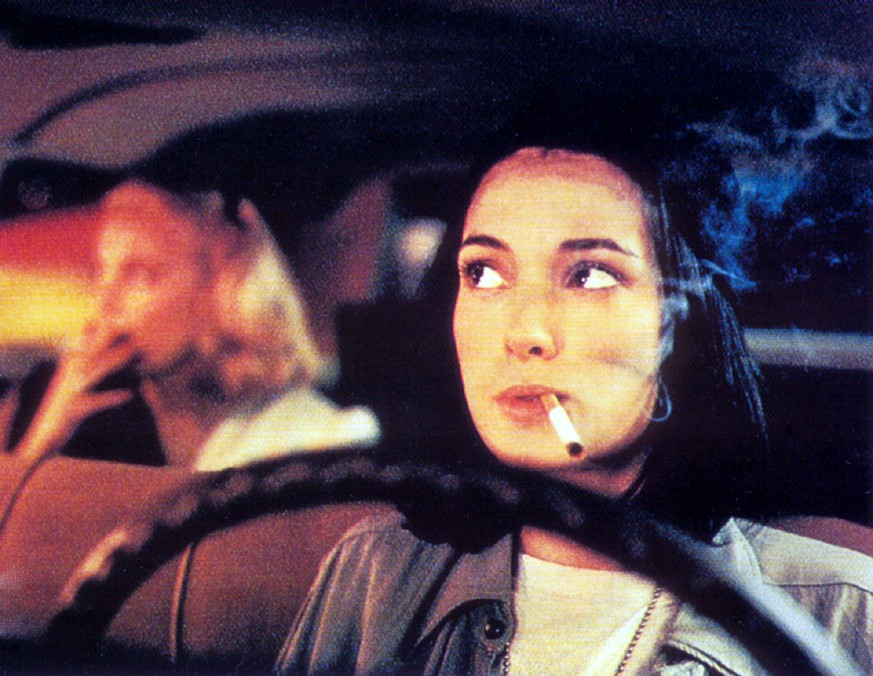On Fictional Sex in the ’90s

Long, long ago, in a galaxy far, far away–that is, in 1990s mid-Atlantic America, in which I was miserable in a very teenage way, being a teenager–I began to read Tom Robbins. Who is he? younger readers may ask. Well, my friends, while some individuals spent the dregs of the twentieth century grabbing pussy, Mr. Robbins was writing about it. A lot.
Tom Robbins is the author of Jitterbug Perfume, Even Cowgirls Get the Blues, and numerous other works that earned him the honor of being named one of the 100 Best Writers of the 20th Century by Writer’s Digest in the year 2000. According to some sources, Robbins was also labeled “the most dangerous writer in the world” by the legendary Italian critic Fernanda Pivano. Was it because he worshipped what others could barely grab?
In many ways, I long very much for that bygone galaxy. I definitely do not miss, however, how, way back then, I had to rely on fiction to give me the information I wanted about how things work with the matters of the heart–as well as with those oft-legislated organs. My parents would not let me go to the local mall by myself, but they paid zero attention to what I was reading.
While Robbins paid homage to the aforementioned pussy, he did so through his very male gaze. Learning how to see yourself as a woman through the eyes of a middle-aged pervy writer dude is, you know, kind of confusing if you’re a teenage girl. Not as confusing as reading D.H. Lawrence, but damn confusing all the same. That was a couple years before I discovered Anais Nin, and even she saw herself through Henry Miller’s eyes. The point is: reading Tom Robbins as an introductory sex manual was both helpful and very, very confusing.
Recently, I reread Jitterbug Perfume because of a much more fun confusion resulting from my learning about one very exciting Italian perfumery. Laboratorio Olfattivo has a perfume named Alambar. This immediately called to mind Alobar, one of Jitterbug Perfume’s main characters. Wearing an exciting new perfume is dangerous, in that you may offend those around you in the attempt to pleasure yourself. Rereading a favorite book from young adulthood is dangerous, in that there is much to remind you of what you used to revere, and much to point out what your naive mind may have missed.
A trickster writer, Robbins delights in a beautiful sentence but also pulls stunts such as having a character peer into the mirror or, as in the case of Jitterbug Perfume’s Alobar, disrobe and turn around for the viewing pleasure of one of his many wives. These are sneaky ways to tell the reader what a character looks like: sneaky because to the lay reader, these maneuvers provide information that relieves the mind of having to create an image all by itself. To the reader who is also a writer, who has labored to make a character live in the mind of a reader without providing every last detail down to the holes in her underpants, these maneuvers seem–well, they seem cheap. Almost as cheap as the fact that Alobar is the first “individual” in the western world and his heteronormative true love is a century or two (or three or four) younger.
Robbins has made his mark on the world, but that the world still grants power to old dudes with centuries-younger female companions is no fault of his. We may need fiction as magical as his now even more than ever. Who wouldn’t want to believe every word of the following?
No, [Alobar] would not be remembered as bard—nor, for that matter, as warrior or king. Life is fair, however, and in the fragrance industry, his name would one day become an accepted part of the nomenclature. According to Priscilla, the genius waitress, an alobar is a unit of measurement that describes the rate at which Old Spice after-shave lotion is absorbed by the lace on crotchless underpants, although at other times she has defined it as the time it takes Chanel No. 5 to evaporate from the wing tips of a wild duck flying backward.
The first lie is obvious: everyone knows life is not fair. The second is less conspicuous: an alobar is not the unit of measurement of the dispersal of scent. I’ve consulted all sorts of sources and not one single alobar shows up. What does is a unit called an olf, named for one very tricky Dane with a radical hairdo: P. Ole Fanger.
P. Ole Fanger sounds like he comes straight out of one of Robbins’ novels, but no: he was real. As his obituary states: “PAVEL OLE FANGER, widely considered the world’s leading expert on the effects of indoor environments on human comfort, health, and productivity, died September 18, 2006, at the age of 72, during his second visit to Syracuse University in his new role as a University Professor.”
It was Fanger who developed what Robbins attributed to Alobar:
In the 1980s, digging even deeper into human physiology, psychology, and subjective behavior, he introduced sensory units for perceived air quality. In his puckish Danish way, these units were designated the ‘olf’ and ‘decipol.’ An olf is the emission rate of air pollutants (bioeffluents) from a standard (sedentary) person. A decipol is one olf ventilated at a rate of twenty cubic feet per minute of unpolluted air. Based on extensive experimental data, Fanger developed a curve that gives the percentage of dissatisfied persons as a function of ventilation rate per olf.
I love that the olf measures the bioeffluents coming from a sedentary person, and that Fanger measured the percentage of dissatisfied persons. Clearly, he taught upstate for a reason. As for how many olfs I’ve created by wearing Alambar, I couldn’t tell you. But what I can tell you is I haven’t had to fight off any men two to four times my age. Which, in a way, is a win–at least in my book.
What I’ve learned outside of books is to be prepared to fight them off–their hands and their laws–all the same.



